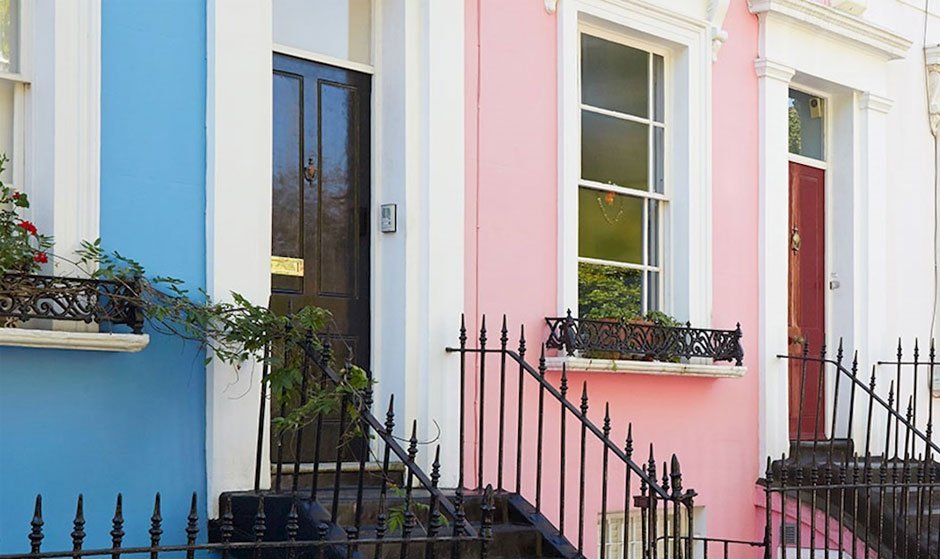Introduction to Freeholder Building Insurance
Navigating the world of property insurance can often feel overwhelming, especially regarding freeholder buildings insurance. This type of insurance is crucial for those who own a property’s freehold, particularly in a block of flats.
Understanding the intricacies of buildings insurance is about compliance and ensuring the protection and sustainability of your property investment.
What is Freeholder Buildings Insurance?
Buildings insurance is a specialized form of insurance explicitly designed for freeholders. This insurance plays a vital role if you own the freehold of a block of flats or any such property. It covers the physical structure of the building and offers protection against a range of risks, including fire, flood, and structural damage.
In essence, freeholders buildings insurance is a comprehensive form of cover that ensures the physical integrity of the building. It differs from standard home insurance, which typically covers only the contents, not the structure itself.
Key Components of Freeholder Buildings Insurance
Buildings Insurance Cover
The core component of buildings insurance is the building insurance cover. This cover is essential as it protects the physical structure of your property, including walls, roofs, floors, and fixtures. This insurance can be a financial lifesaver in case of damage due to unforeseen events like natural disasters.
Third-Party Liability Cover
Another crucial aspect is third-party liability cover. This protects the freeholder against legal liabilities in case someone gets injured within the property premises. Given the complexities of managing a block of flats, having robust third-party liability cover is indispensable.
Loss of Rent and Alternative Accommodation
If the property becomes uninhabitable, buildings insurance for freeholders often includes cover for loss of rent. Additionally, some policies offer provisions for alternative accommodation costs, ensuring that tenants are not left without a place to stay.
Importance of Freeholder Building Insurance for Blocks of Flats
Protecting the Freehold of the Property
Securing comprehensive freeholders buildings insurance is even more critical for those who own a block of flats. The freehold of a property involves not just ownership but also responsibility for the upkeep and safety of the entire building. This insurance safeguards against the vast array of risks associated with property management.
Cover for Freeholders
Cover for freeholders in a block of flats extends beyond simple building repair. It encompasses various aspects, such as flat insurance coverage for individual units and building insurance for the whole structure. It’s a holistic approach to protecting one’s investment and ensuring the well-being of all residents.
Arranging Buildings Insurance
When arranging building insurance for a block of flats, it’s crucial to understand the needs specific to your property. The insurance policy should be comprehensive enough to cover all possible scenarios. Insurance costs can vary, so it’s vital to balance affordability with adequate coverage.
Choosing the Right Freeholder Buildings Insurance Policy
Assessing Insurance Needs
The first step in arranging building insurance cover is assessing your needs. Consider factors like the size of the property, the number of units, and the location. The requirements can differ significantly for a leasehold property versus a freehold property.
Understanding Insurance Cover Options
There are various types of insurance coverage available. It’s important to understand the difference between landlord insurance, which is more suited for rented properties, and building insurance for properties you own and manage.
Evaluating Policies
When evaluating different insurance policies, consider insurance cover limits, liability cover, and exclusions. It’s also wise to check for special inclusions like cover for accidental damage or provisions for complex claims processes.
Consulting Experts
Consulting with an insurance expert or a property management company can provide valuable insights. They can help arrange building insurance tailored to your property’s needs.
Reading the Fine Print
Always read the fine print of your building’s insurance policy. Understand terms like per total claim, per incident caps, and exclusions. This will help in avoiding surprises during a claim.
Managing Freeholder Building Insurance Costs
Balancing Coverage and Costs
One of the primary concerns when considering freeholder insurance is the balance between comprehensive coverage and manageable costs. Buildings insurance for freeholders can vary significantly in price based on the level of coverage, location of the property, and other risk factors.
Involving Tenants through Service Charges
In a block of flats, it’s common practice to include the cost of the block of flats insurance in the annual service charge billed to the tenants. This helps offset the insurance costs while ensuring the property is adequately insured. It’s crucial, however, to ensure transparency and fairness in how these charges are calculated and allocated.
Utilizing Recognized Independent Price Indices
Some freeholders reference recognised independent price indices to ensure that the freehold buildings insurance is priced fairly. This helps align the insurance costs with market rates, ensuring that both the freeholder and the tenants get a fair deal.
Opting for a Standard Block Insurance Policy
For many freeholders, a standard block insurance policy is an efficient way to cover all the basics. These policies are often comprehensive and tailored for blocks of flats, providing essential covers like building insurance, liability cover, and even own contents cover for the freeholder’s belongings in communal areas.
The Role of Freeholders in Insurance
Freeholders’ Responsibility in Insurance
There’s a heightened level of responsibility as a freeholder, particularly in a property referred to as a block of flats. Freeholder buildings insurance covers the structure and often extends to communal gardens, exterior and common parts, and other shared facilities.
Freeholder Buildings Insurance for Multiple Dwellings
In cases where the freehold involves more than one dwelling, like a block of flats, the freeholder must ensure that the insurance policy is sufficiently broad to cover all aspects of the property. This might include joint building insurance if the freehold is shared among several parties.
Choosing the Right Insurance Cover
Selecting the right freeholder insurance cover requires careful consideration of various factors, including the potential for loss of rent, the need for alternative accommodation coverage, and the inclusion of features like accidental damage.
Securing the right insurance is fundamental for anyone owning a block of flats or similar properties. It not only provides financial protection but also peace of mind. Whether it’s flats, buildings, or block insurance, choosing the appropriate cover is a step towards responsible property management.
In the next section, we will delve deeper into the nuances of freeholder buildings insurance cover and explore how to manage insurance process effectively.
Property Valuation
Initiating the buildings insurance process commences with a precise valuation of the property, encompassing construction costs and the worth of fixtures. Property owners utilize this valuation to choose an insurance policy that offers sufficient coverage for possible damages and losses.
Provider Comparison
Following valuation, property owners diligently compare insurance providers, emphasizing an analysis of policy details, premium rates, and the extent of coverage. This examination prioritizes understanding the types of risks covered, such as natural disasters, fire, or vandalism, and scrutinizing the terms and conditions of each policy.
Documentation Completion
The third step involves meticulous completion of the necessary documentation, where property owners provide exhaustive details about the property and any specific requirements. Accuracy at this stage is vital for securing comprehensive coverage.
Application Submission and Waiting
Next, property owners submit their application and undergo a waiting period for the insurance company’s decision. This phase often includes additional queries or property inspections by the insurer to verify the property’s condition and risk factors.
Insurer Review and Assessment
The fifth step is the insurance company’s review and assessment. During this stage, the insurer evaluates the risk profile of the property and may negotiate terms or suggest coverage adjustments based on their findings.
Policy Issuance and Maintenance
Upon approval, property owners receive the policy documents, marking the successful arrangement of insurance. The final step involves establishing a schedule for regular policy reviews and updates, essential for maintaining relevance and adequacy of coverage, particularly after substantial changes to the property or its use.
Conclusion
Opting for insurance is crucial when considering the vulnerability of properties to sudden, catastrophic events. Imagine a thriving property, its stability and prosperity shattered overnight by a devastating natural disaster. The remnants of what were once symbols of success now lie in ruins, a stark reminder of the fragility of physical assets.
In such scenarios, property owners lacking insurance confront a grim reality: a future overshadowed by loss and the formidable task of rebuilding from the ground up.
Insurance serves as an indispensable defense, not just a mere contingency plan. It provides more than simple repair of physical damage; it acts as a vital support system for future stability.
In its absence, property owners not only grapple with the immediate aftermath but also face the looming threat of financial catastrophe. Reconstruction expenses can escalate rapidly, eroding savings and ensnaring owners in a relentless cycle of debt.
The situation becomes even more dire when legal complications arise after disasters. Uninsured, property owners find themselves vulnerable to legal disputes, exacerbating their financial woes. In these critical moments, lack of insurance escalates the crisis, propelling property owners into a vortex of despair and uncontrollable turmoil.
In essence, freeholder building insurance is a vital safeguard, a buffer against the unpredictable blows of fate. It stands as a beacon of hope and resilience, preventing a temporary setback from spiraling into an irreversible financial downfall. For property owners, it’s the decisive factor between recoverable loss and a complete financial collapse.
Frequently Asked Questions
Does a freeholder need building insurance?
Yes, a freeholder typically needs building insurance to protect the property’s structural integrity and cover potential liabilities. This is especially important for properties with multiple units or tenants, like blocks of flats.
What does the insurance cover?
Freeholder building-insurance generally covers the physical structure of the building, including walls, roofs, and fixed installations. It also often includes liability cover for injuries or damages on the property and may cover loss of rent and alternative accommodation.
Do I need building insurance for a freehold flat?
Yes, if you own a freehold flat, it’s advisable to have building insurance. This insurance protects the structure of your flat and possibly shared areas if it’s part of a larger building or complex.






